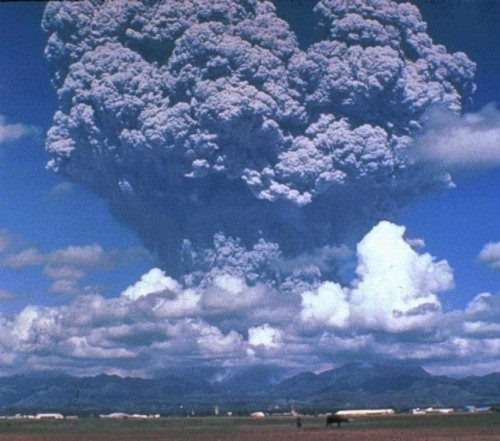Volcano Facts
A volcano is a fracture in the crust of a planetary-mass object that allows hot lava, volcanic ash, and gases to escape from a magma chamber below the surface.
Depending on the type, above the surface, a volcano looks like a mountain, a dome or shield. This landform is usually conical in shape and has a crater or vent through which lava, rock fragments, hot vapor, and gas come out during eruption.
Depending on the type, above the surface, a volcano looks like a mountain, a dome or shield. This landform is usually conical in shape and has a crater or vent through which lava, rock fragments, hot vapor, and gas come out during eruption.
Below are some of the facts about volcano:
- The study of volcanoes is called volcanology or sometimes spelled vulcanology.
- The word volcano came from 'Vulcano', the name of a volcanic island in the Aeolian Islands of Italy. This island's name in turn comes from Vulcan, the god of fire in Roman mythology.
- On Earth, volcanoes are generally found where tectonic plates are diverging or converging.
- Most volcanoes on earth are found under water.
- Some planets in our solar system, like the Mercury, Mars and Venus, have volcanoes too.
- Not all volcanoes have conical shape. Others have flat surface, with fissure vents, and others are shield-like in shape.
- Volcanoes have shaped the surface of the Earth. Molten rock pumped onto the surface have expand lands and created new islands.
- The islands of Hawaii were formed by underwater volcanoes that blasted out so much rock and reached above the surface of the sea.
- Throughout the history of the earth, volcanoes have emitted greenhouse gases into the air and changed the makeup of the atmosphere.
- Volcanoes are generally classified into four main types: cinder cones, composite volcanoes or stratovolcanoes, lava domes and shield volcanoes
- The most common type of volcanoes are the cinder cones volcanoes.
- The Volcanic Explosivity Index, which was devised in 1982, measures the relative explosiveness of volcanic eruptions.
- There are approximately 1,500 potentially active volcanoes in the world. 500 of which have erupted in historical time.
- The top five countries with the most volcano are: United States - 173, Russia - 166, Indonesia - 139, Japan - 112 and Chile - 104.
- Mt. Mauna Loa in Hawaii is the largest, both mass and volume, active volcano on the world. It covers half of the Island of Hawai‘i and by itself amounts to about 85 percent of the area of all the other Hawaiian Islands combined.
- Over geological time, volcanic eruptions have directly and indirectly benefited mankind. It provide some of the most fertile soils on Earth, produce geothermal energy and push minerals such as copper, gold, silver, lead, and zinc near the surface of the earth to be mined.
